*NURSING > QUESTIONS & ANSWERS > NURS611 / Nurs 611/ NURSING 611 Chapter 27: Maryville University Of St. Louis (GRADE A) (All)
NURS611 / Nurs 611/ NURSING 611 Chapter 27: Maryville University Of St. Louis (GRADE A)
Document Content and Description Below
Chapter 27 Teacher Quiz 1. Questions 1. 1. What is the most abundant class of plasma protein? A. Globulin B. Albumin C. Clotting factors D. Complement proteins 2. 2. What is the effe... ct of low plasma albumin? A. Clotting factors decrease, thus increasing the chance of prolonged bleeding. B. Fewer immunoglobulins are synthesized, thus impairing the immune function. C. Less iron is stored, thus increasing the incidence of iron deficiency anemia. D. Osmotic pressure decreases, thus water moves from the capillaries to the interstitium. 3. 3. What is the life span of an erythrocyte (in days)? A. 20 to 30 B. 60 to 90 C. 100 to 120 D. 200 to 240 4. 4. Which statement concerning erythrocytes is true? A. Erythrocytes contain a nucleus, mitochondria, and ribosomes. B. Erythrocytes synthesize proteins. C. Erythrocytes have the ability to change shape to squeeze through microcirculation. D. Erythrocyte colony-stimulating factor (E-CSF) stimulates erythrocytes. 5. 5. Granulocytes that contain granules of vasoactive amines, such as histamine, are called: A. Neutrophils B. Eosinophils C. Monocytes D. Basophils 6. 6. Which of the following are formed elements of the blood that are not cells but are disk-shaped cytoplasmic fragments essential for blood clotting? A. Monocytes B. Platelets C. Macrophages D. Erythrocytes 7. 7. Blood cells that differentiate into macrophages are known as: A. Monocytes B. Neutrophils C. Eosinophils D. Basophils 8. 8. Without prior exposure to an antigen, which cells are able to destroy some types of tumor cells and some virus-infected cells? A. Lymphocytes B. Plasma cells C. Megakaryocytes D. Natural killer (NK) cells 9. 9. What is the life span of platelets (in days)? A. 10 B. 30 C. 90 D. 120 10. 10 Fetal hematopoiesis occurs in which structure? A. Gut B. Spleen C. Bone marrow D. Thymus 11. 11. What is the consequence of a splenectomy? A. The level of iron in circulation increases. B. Antibody production increases to improve immune function. C. The number of defective cells in circulation increases. D. The number of clotting factors increases. 12. 12. During an infection, why do lymph nodes enlarge and become tender? A. B lymphocytes proliferate. B. The nodes are inflamed. C. The nodes fill with purulent exudate. D. The nodes are not properly functioning. 13. 13. Which blood cells are the chief phagocytes involved in the early inflammation process? A. Neutrophils B. Monocytes C. Eosinophils D. Erythrocytes 14. 14. Which blood cells are biconcave in shape and have the capacity to be reversibly deformed? A. Neutrophils B. Monocytes C. Eosinophils D. Erythrocytes 15. 15Which hemoglobin is made from oxidized ferric iron (Fe3+) and lacks the ability to bind oxygen? A. Deoxyhemoglobin B. Oxyhemoglobin C. Methemoglobin D. Glycosylated hemoglobin 16. 16. The absence of parietal cells would prevent the absorption of an essential nutrient necessary to prevent which type of anemia? A. Iron deficiency B. Pernicious anemia C. Folic acid deficiency anemia D. Aplastic anemia 17. 17. Which nutrients are necessary for the synthesis of DNA and the maturation of erythrocytes? A. Protein and niacin B. Iron and vitamin B6 (pyridoxine) C. Cobalamin (vitamin B12) and folate D. Pantothenic acid and vitamin C 18. 18. Which nutrients are necessary for hemoglobin synthesis? A. Protein and niacin B. Iron and vitamin B6 (pyridoxine) C. Cobalamin (vitamin B12) and folate D. Pantothenic acid and vitamin C 19. 19. Recycling of iron from erythrocytes is made possible by which of the following? A. Transferrin B. Hemosiderin C. Apoferritin D. Erythropoietin 20. 20. By which structure are mature erythrocytes removed from the bloodstream? A. Liver B. Lymph nodes C. Thymus D. Spleen 21. 21. Which substance is used to the chronic anemia associated with chronic renal failure? A. Iron B. Erythropoietin C. Cobalamin (vitamin B12) D. Folate 22. 22. What is the role of thromboxane A (TXA2) in the secretion stage of hemostasis? A. Stimulates the synthesis of serotonin. B. Promotes vasodilation. C. Stimulates platelet aggregation. D. Promotes formation of cyclooxygenase. 23. 23. Which of the following is the role of nitric oxide (NO) in hemostasis? A. Stimulates the release of fibrinogen to maintain the platelet plug. B. Stimulates the release of clotting factors V and VII. C. Causes vasoconstriction and stimulates platelet aggregation. D. Controls platelet activation through cyclic adenosine monophosphate (cAMP)–mediated signaling. 24. 24. The drug heparin acts in hemostasis by which processes? A. Inhibiting thrombin and antithrombin III (AT-III) B. Preventing the conversion of prothrombin to thrombin C. Shortening the fibrin strands to retract the blood clot D. Degrading the fibrin within blood clots 25. 25. What is plasmin’s role in the clotting process? A. Stimulates platelet aggregation. B. Inhibits platelet adhesion and aggregation. C. Prevents the conversion of prothrombin to degrade the fibrin within blood clots. D. Degrades the fibrin within blood clots. 26. 26. What does polycythemia at birth indicate? A. Hypoxia in utero B. Dysfunctional bone marrow C. Congenitally absent spleen D. Dehydration in utero 27. 27. Where are Kupffer cells located? A. Kidneys B. Liver C. Pancreas D. Spleen 28. 28. Where are Langerhans cells found? A. Skin B. Intestinal lining C. Kidney D. Thyroid 29. 29. What is the role of collagen in the clotting process? A. Initiates the clotting cascade. B. Activates platelets. C. Stimulates fibrin. D. Deactivates fibrinogen. 30. 30. Which form of iron (Fe) can be used in the formation of normal hemoglobin? A. Fe+ B. Fe2+ C. Fe3+ D. Fe4+ 31. 31. Where are alveolar macrophages found? A. Skin B. Breasts C. Gastrointestinal tract D. Lungs 32. 32. What changes to the hematologic system is related to age? A. Platelet adhesiveness decreases. B. Lymphocyte function decreases. C. Cellular immunity increases. D. Erythrocyte reproduction accelerates. 33. 33. What is the function of erythrocytes? A. Tissue oxygenation B. Hemostasis C. Infection control D. Allergy response 34. 34. Which characteristics allow erythrocytes to function as gas carriers? (Select all that apply.) A. Permanent shape B. Compactness C. Reversible deformability D. Presence of hyperactive mitochondria E. Biconcavity 35. 35. Which statements about plasma proteins are ? (Select all that apply.) A. Provide clotting factors. B. Transport triglycerides. C. Synthesize complement proteins. D. Create hydrostatic pressure. E. Transport cholesterol. 36. 36. What are the primary anticoagulant mechanisms? (Select all that apply.) A. Antithrombin III B. Tissue factor pathway inhibitor C. Hematopoiesis D. Protein C E. Phagocytosis 37. 37. Which statements are true regarding the role of the endothelium in clot formation? (Select all that apply.) A. The surface of the endothelium produces plasma protease inhibitors. B. Plasma protease inhibitors assist in preventing clot formation. C. Thrombomodulin is a protein that is converted on the surface of endothelial cells. D. Protein A binds to thrombomodulin. E. Activated protein C enhances the adhesion ability of neutrophils. 38. 38. Which statements characterize albumin? (Select all that apply.) A. Retains sodium to maintain water balance. B. Provides colloid osmotic pressure. C. Is synthesized in the liver. D. Is a carrier for drugs that have low water solubility. E. Is a small molecule 39. 39. Match the descriptions with the corresponding terms. Term Definition Clotting Red blood cell development Red blood cell destruction Platelet formation Blood cell production Definitions [Show More]
Last updated: 2 years ago
Preview 1 out of 8 pages
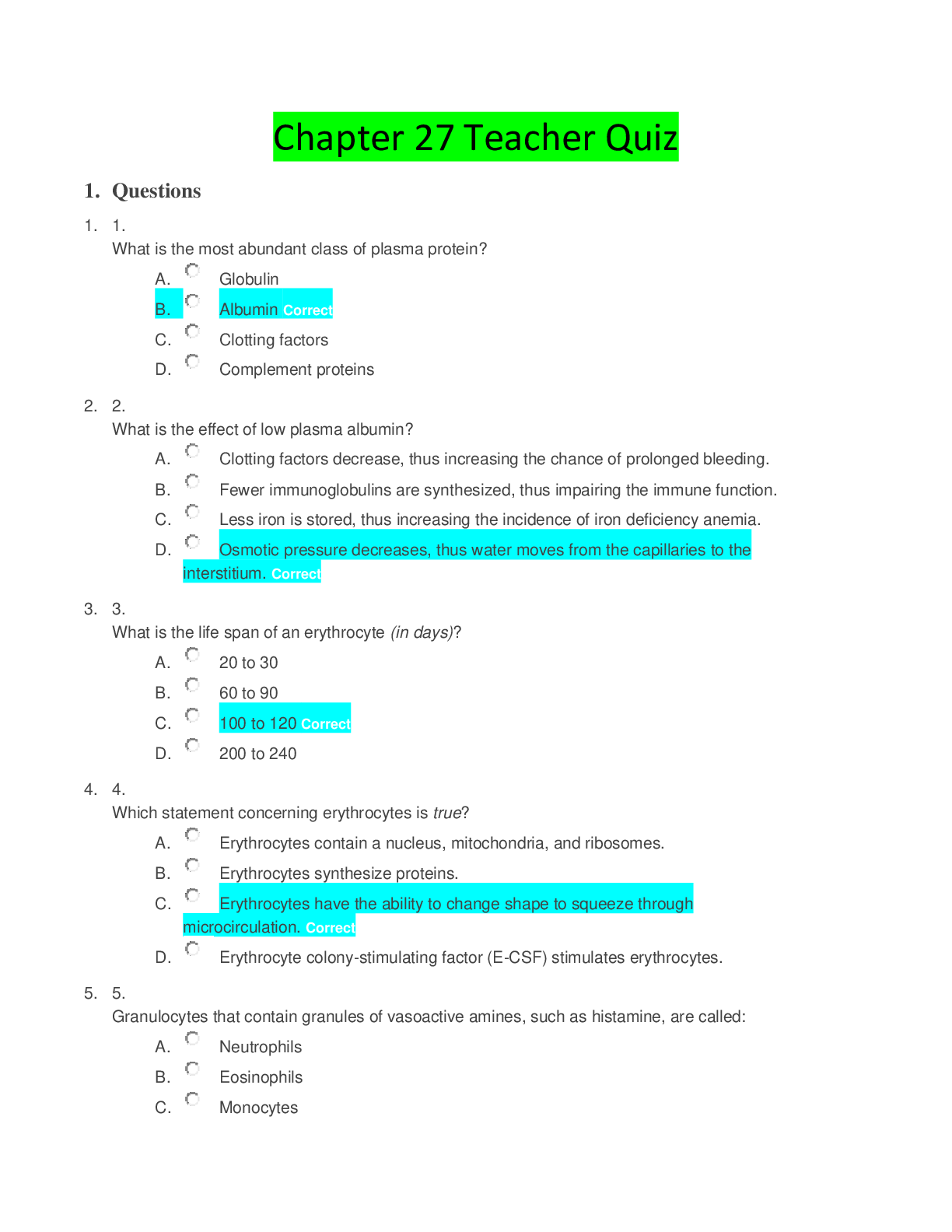
Buy this document to get the full access instantly
Instant Download Access after purchase
Buy NowInstant download
We Accept:

Reviews( 0 )
$10.00
Can't find what you want? Try our AI powered Search
Document information
Connected school, study & course
About the document
Uploaded On
Apr 25, 2020
Number of pages
8
Written in
Additional information
This document has been written for:
Uploaded
Apr 25, 2020
Downloads
0
Views
118

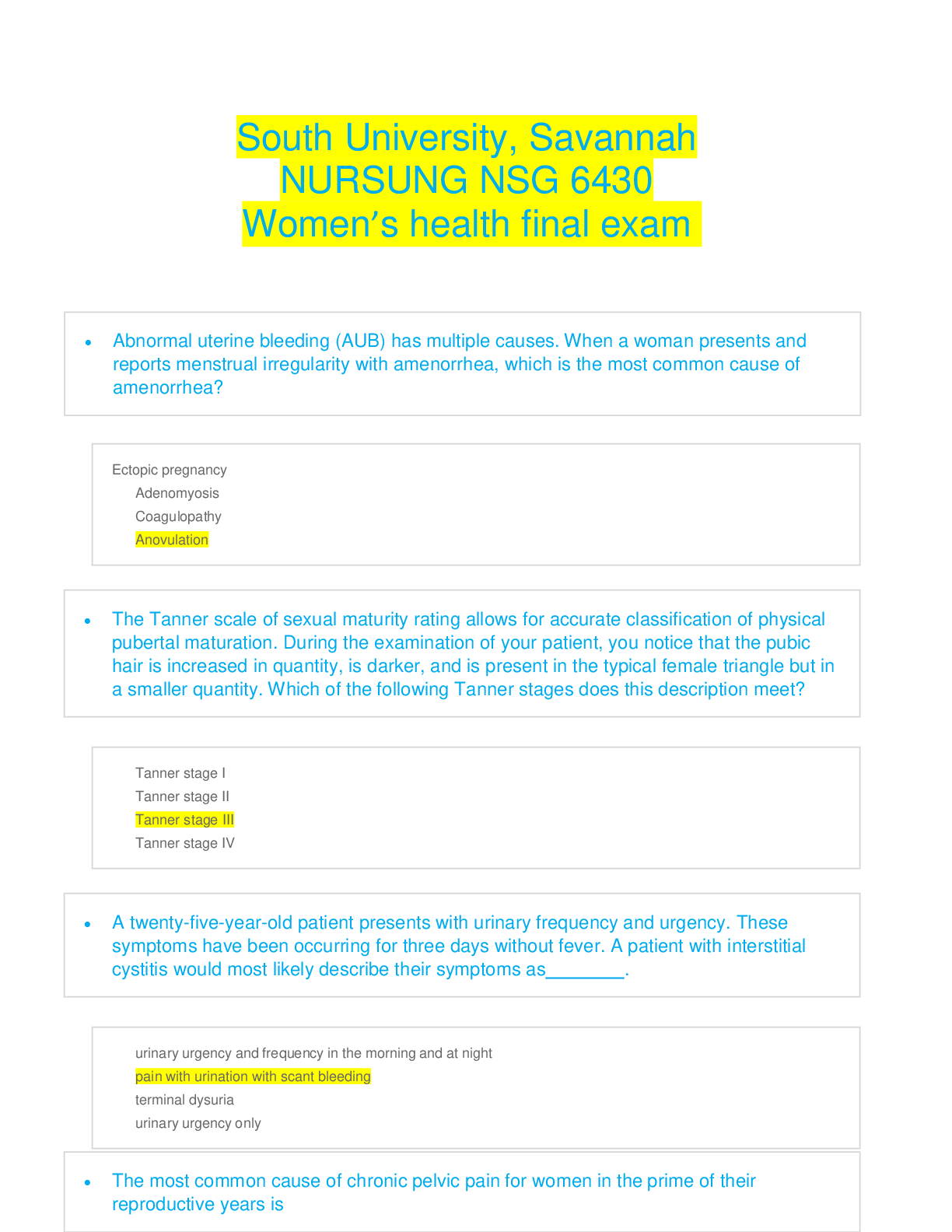

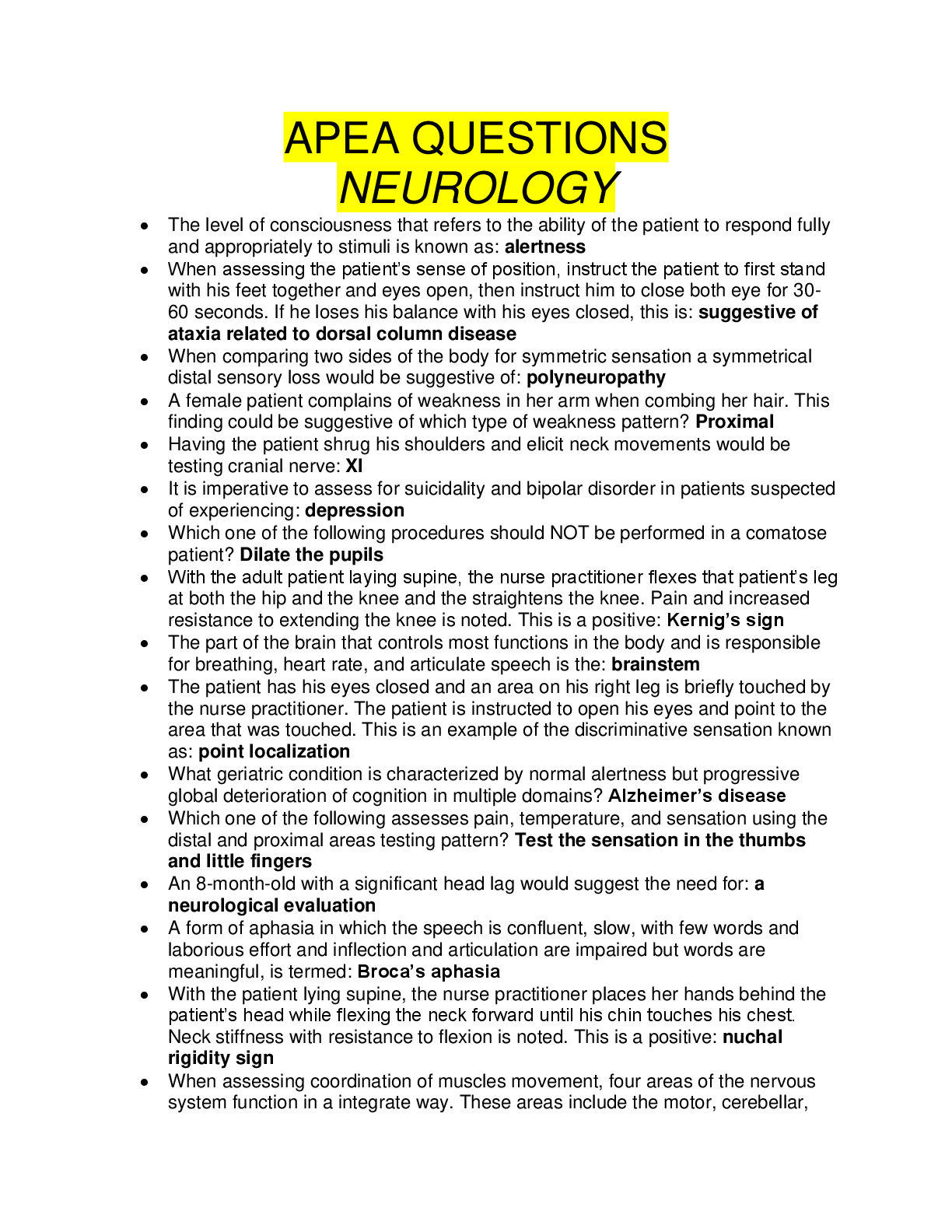

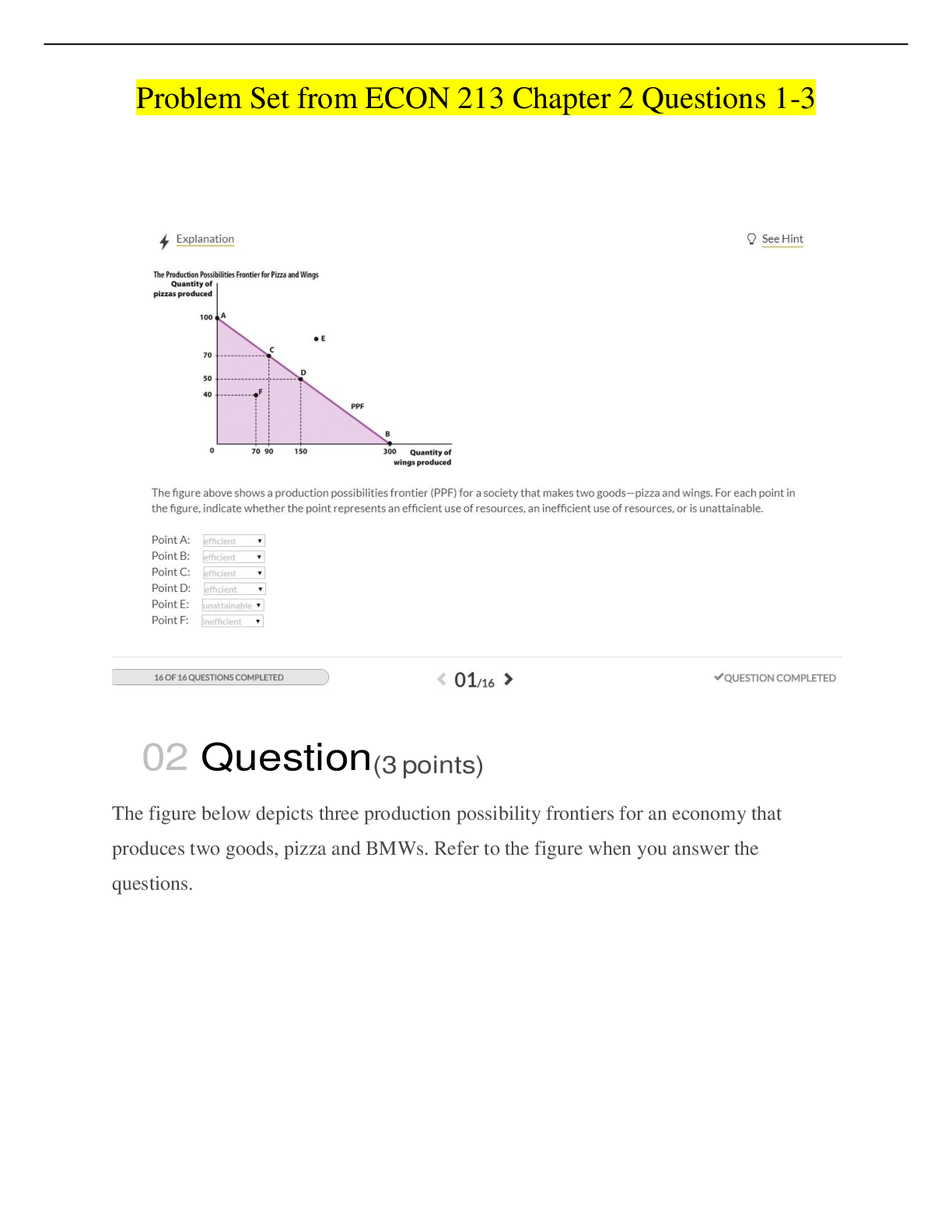
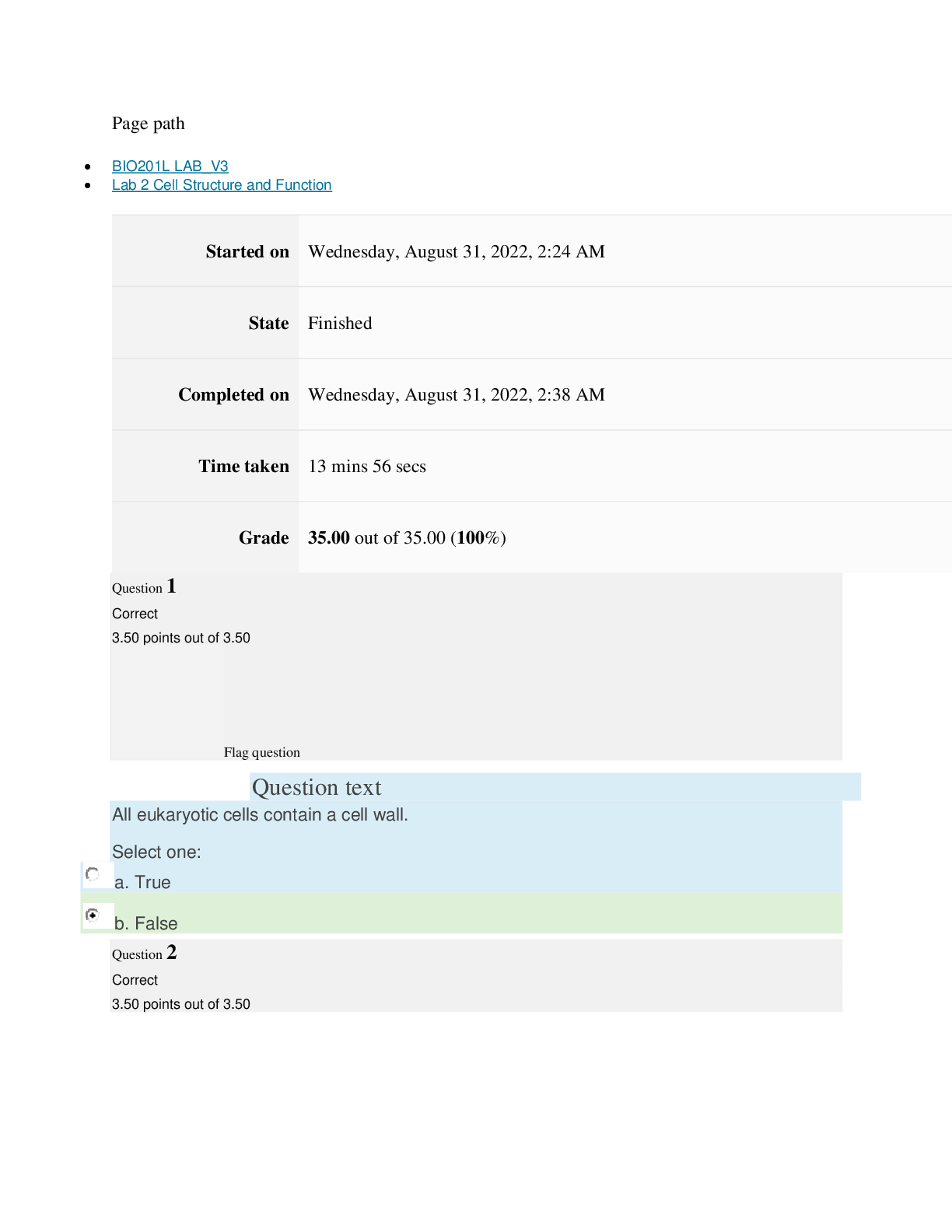

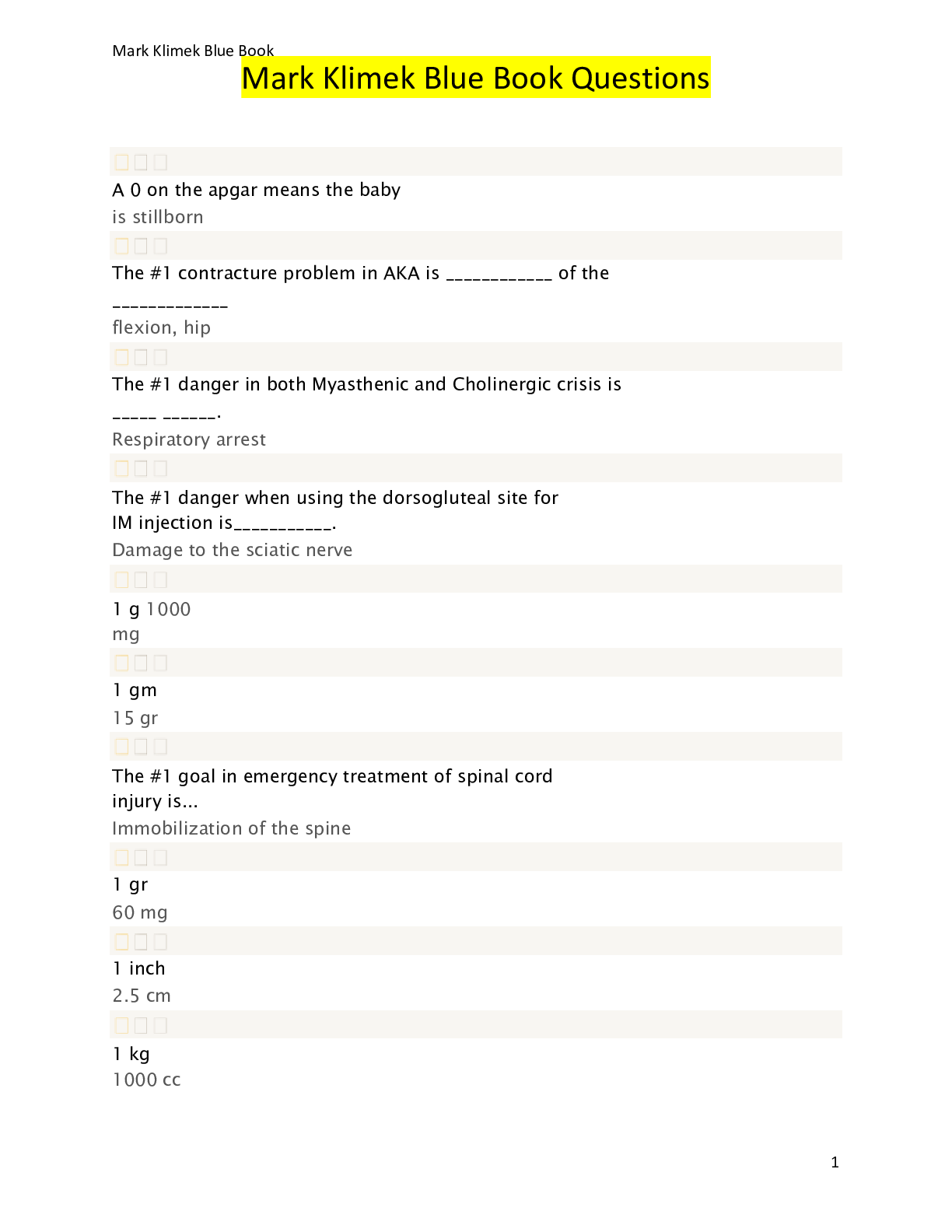

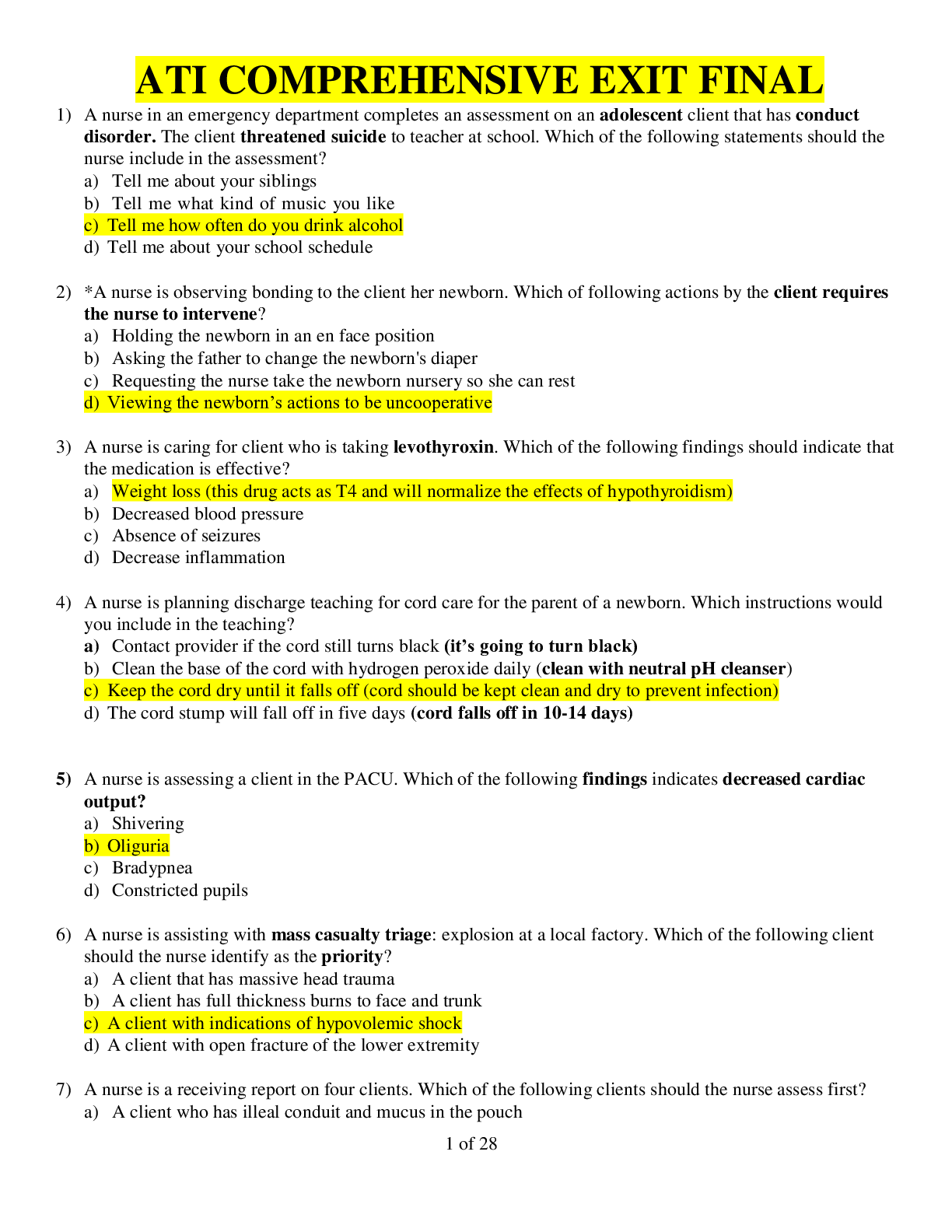

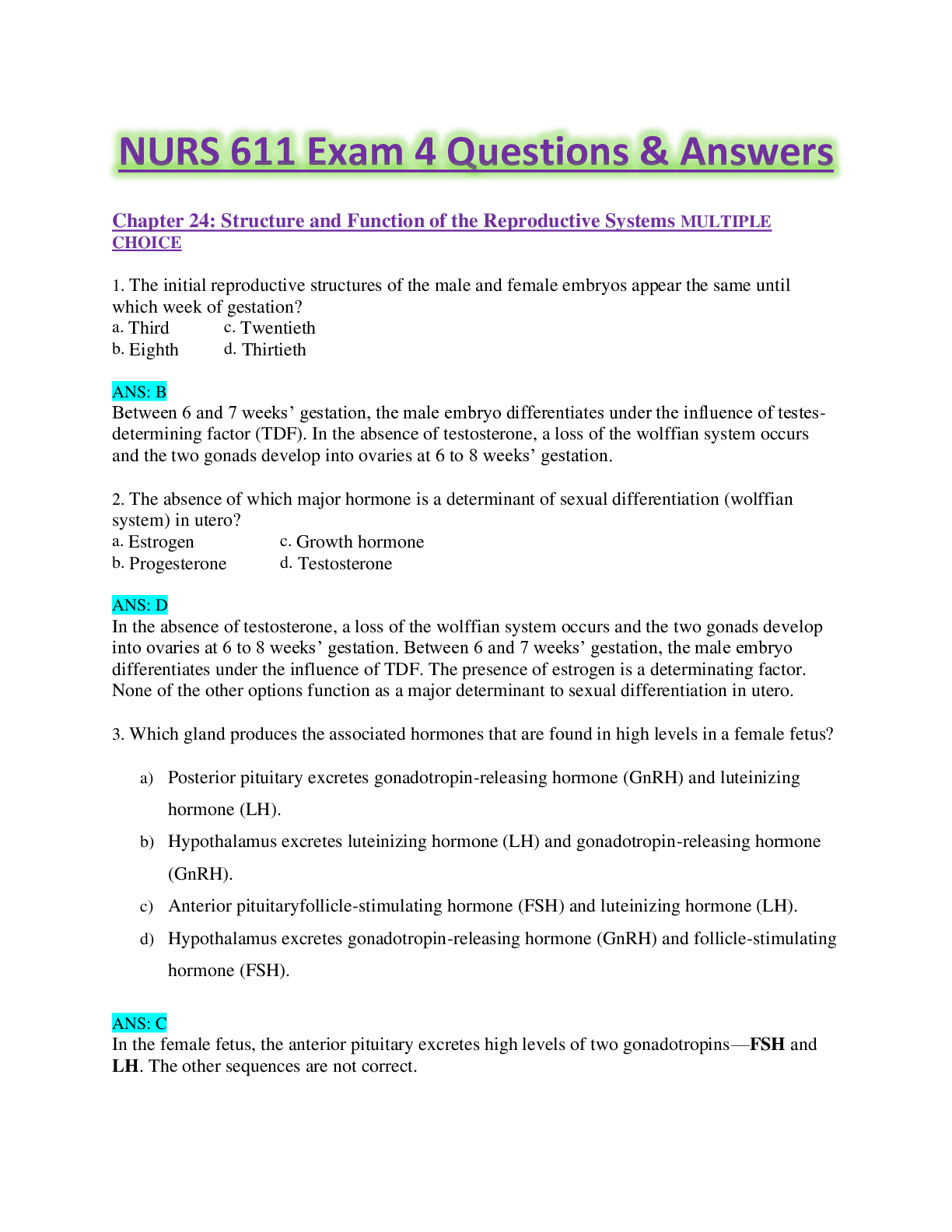
.png)
.png)
.png)

